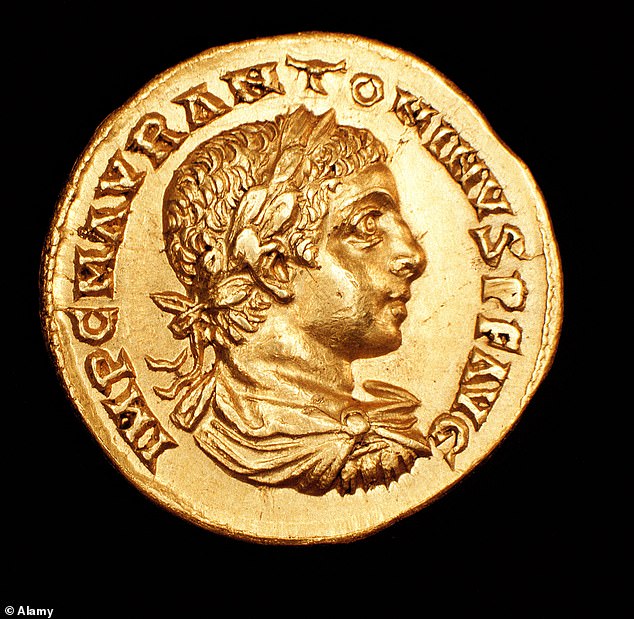Roman Emperor Elagabalus was transgender and must be referred to as ‘she’, museum says despite experts rubbishing the claim
- North Hertfordshire Museum calls 3rd century AD ruler ‘she’
A Roman emperor has been branded transgender by a British museum, sparking an uproar among historians.
The North Hertfordshire Museum has decided to refer to the 3rd century AD ruler Elagabalus as ‘they’ to be ‘sensitive’ to their pronoun preferences in an exhibition.
The council-run museum in Hithcin, which consults with LGBT charity Stonewall, owns a coin minted during the government and uses it in LGBT-themed exhibitions.
The decision is based on the account of Roman chronicler Cassius Dio, who claims that Elagabalus was called ‘wife, mistress and queen’, told a lover ‘Do not call me Lord, for I am a Lady’, and asked for the feminine genitals. formed for him.
But Dio served Emperor Severus Alexander, who took the throne after Elagabalus’ assassination, and historians believe the accounts were simply a character assassination.
The decision is based on the account of Roman chronicler Cassius Dio, who claims that Elagabalus was called ‘wife, mistress and queen’.

The North Hertfordshire Museum has decided to call the 3rd century AD ruler Elagabalus ‘she’

The council-run museum in Hithcin, which consults with LGBT charity Stonewall, owns a coin minted during the government and uses it in LGBT-themed displays
Cambridge classics professor Andrew Wallace-Hadrill told the Telegraph: ‘The Romans didn’t have our idea of ’trans’ as a category, but they used accusations of sexual behavior ‘as a woman’ as one of the worst insults against women. Gentlemen.’
Keith Hoskins, executive member for arts at North Herts Council, said: ‘Elagabalus definitely preferred the pronoun ‘she’ and as such this is something we reflect when we discuss her in contemporary times.”
